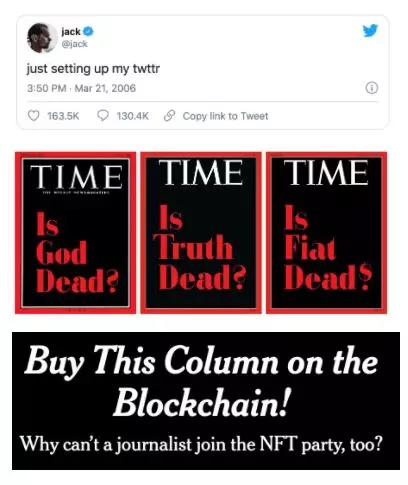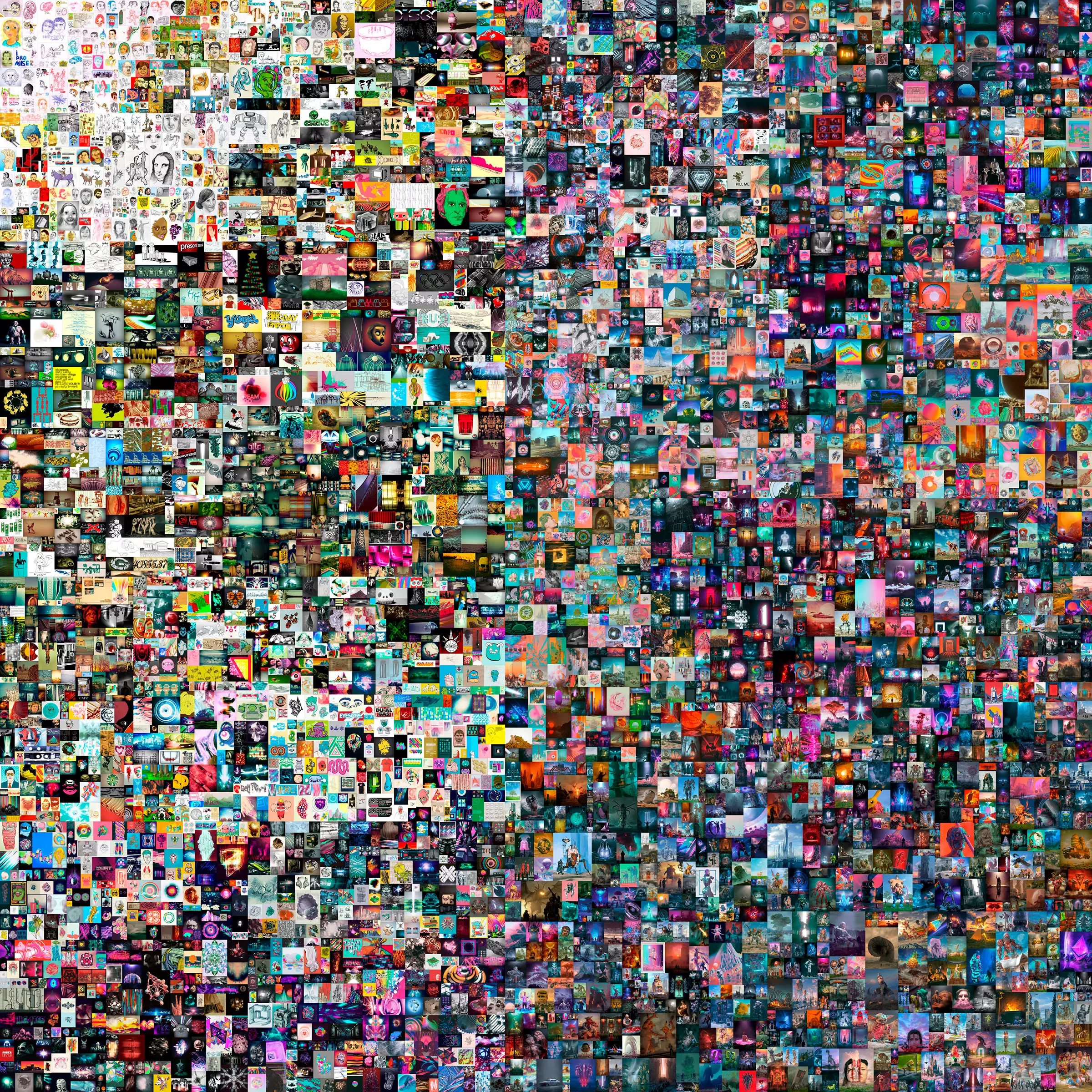From Access to Ownership: How NFTs will unlock the value of media companies’ greatest asset — their intellectual property.
Last week, Jack Dorsey auctioned off his first tweet — “just setting up my twittr” — for a whopping $2.9 million. Media company Time, Inc. also made news last week, auctioning off three special edition digital magazine covers, including the 1966 iconic cover, “Is God Dead?”, the first cover to include only text. Finally, Kevin Roose, the technology columnist for The New York Times is auctioning off the very first New York Times article to be distributed and sold as an NFT. The current bid for this NFT article is $564,000!
What makes these events unique is not the price paid at auction but the nature of the auction itself. These digital works are being sold as non-fungible tokens (NFTs), a type of cryptocurrency that verifies the authenticity and ownership of a digital file. NFTs offer a new way for creators — artists, musicians, writers, etc. — to monetize their intellectual property by selling the ownership rights to their digital works on the blockchain.

What makes NFTs desirable is that they are unique and inherently scarce. Each NFT carries identification codes and metadata that distinguish them for each other. NFTs cannot be traded or exchanged at equivalency, like cash or even Bitcoin, and cannot be replicated. Buyers and collectors are investing in NFTs as a way to own, not merely access, digital assets that are expected to increase in future value due to their provenance, popularity and scarcity.
The value of an NFT can be expressed as the sum of its utility, ownership history, future value and liquidity premium. Perhaps the most important driver of value today is ownership history. As NFT and blockchain author Hugo Chan explains, “Value depends on the identity of the issuer and previous owners of the NFT. NFTs with a high ownership history value are often created or issued by famous artists or companies with a strong brand. There are two ways to increase value. First is to co-operate with companies or individuals with a strong brand to issue NFT tokens. That naturally brings traffic and users to the ecosystem…The second way is to resell NFTs that were previously owned by people who are influential.”
Recent news on NFTs has focused on individual creators — including digital artist Beeple, who made history by selling an NFT of his piece, “Everydays: The First 5000 Days”, for a record-breaking $69 million — but media companies and digital publishers may have the most significant opportunity. As Time demonstrated, publishers have the means to turn their massive store of proprietary digital assets into NFT gold. What’s more, over the past decade, publishers have shape-shifted into digital incubators and creative agencies with a roster of talent that includes digital artists, technologists and storytellers who regularly produce stunning visual and interactive content. Up until now, publishers could only monetize their digital content by controlling access to them — placing stories behind a paywall or surrounding them with annoying ads. NFTs offer a completely new revenue model for publishers that values the underlying asset itself, not merely the right to access it. As Jarrod Dicker of The Washington Post recently noted:
”[The] real struggle in the existing media space, is the value attributed to creative assets. As media moved from print to digital, creative assets have lost the ability to control and maintain value throughout the web ecosystem. With NFTs, digital media now becomes a liquid financial asset secured through cryptography, and programmable through smart contracts.
Media companies have spent years building teams of creatives that have produced petabytes of unique and valuable digital content. The strategy to date has been to leverage this content to build sizable audiences that are packaged and sold to advertisers. Now, media companies can leverage their in-house creative talent to package and sell NFTs to buyers and collectors who want to own some of the world’s most prestigious content, such as The 1619 Project, by The New York Times Magazine, or this piece from The Washington Post that won the 2020 Pulitzer for Explanatory Reporting, or these photos from The St. Louis Post-Dispatch, which won the 2015 Pulitzer for Breaking News Photography for their coverage of the aftermath and protests in Ferguson, Missouri. It is undeniable that each of these creative assets has intrinsic value, historical significance and mass collector appeal that would command huge NFT valuations. As Kevin Roose notes about the New York Times article he’s auctioning as an NTF:
”The biggest perk of all, of course, is owning a piece of history. This is the first article in the almost 170-year history of The Times to be distributed as an NFT, and if this technology proves to be as transformational as its fans predict, owning it might be tantamount to owning NBC’s first TV broadcast or AOL’s first email address.
Beyond individual articles, publishers could even sell entire digital editions as collectibles; for example, the 9/11 digital edition of The New York Times or the front-page artwork from the day the World Health Organization declared a global pandemic. The opportunities to leverage publishers’ digital archives and creative assets as NFTs are virtually limitless.
NFTs are a boon for media corporations. They also offer journalists, videographers, photojournalists and digital creatives the opportunity to participate in, and benefit from, the “liquid financial assets” they create. After an NFT sale is complete, the asset’s creators can receive royalties in perpetuity each time the NFT resells. This new economic model has the power to transform how creatives are compensated and initiate a virtuous cycle that attracts more talent to publishers and media companies, driving the production of in-demand creative assets and NFTs. As Sean Blanda of Crossbeam noted:
”Writers, long subject to the whims of social media algorithms and shrivelling media companies, have never had more opportunities to be fairly compensated for their work. And maybe, just maybe, there is yet another opportunity on the horizon: NFTs.
NFTs offer a vision of a future that recognizes and rewards the value of digital content as a new asset class that is sold and traded like gold or art. It is a future that values ownership over access and scarcity over surplus. Imagine a world where publishers no longer have to run click-bait articles or pop-up ads or limit access to their best content to make ends meet. Instead, they could fund their future by monetizing their most valuable asset — their intellectual property. Now, wouldn’t that be NFTy?
